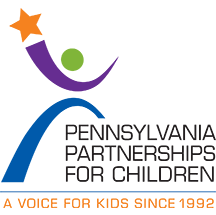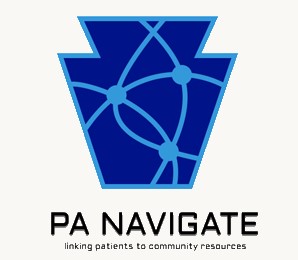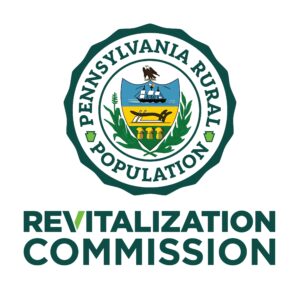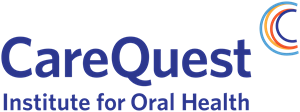- CMS: Medicare Program; Implementation of Prior Authorization for Select Services for the Wasteful and Inappropriate Services Reduction (WISeR) Model
- Public Inspection: CMS: Medicare Program: Implementation of Prior Authorization for Select Services for the Wasteful and Inappropriate Services Reduction Model
- CMS: Secretarial Comments on the CBE's (Battelle Memorial Institute) 2024 Activities: Report to Congress and the Secretary of the Department of Health and Human Services
- HHS: Patient Protection and Affordable Care Act: Marketplace Integrity and Affordability
- HRSA Announces Action to Lower Out-of-Pocket Costs for Life-Saving Medications at Health Centers Nationwide
- Public Inspection: HHS: Patient Protection and Affordable Care Act: Marketplace Integrity and Affordability
- Increased Risk of Cyber Threats Against Healthcare and Public Health Sector
- Eight Hospitals Selected for First Cohort of Rural Hospital Stabilization Program
- Announcing the 2030 Census Disclosure Avoidance Research Program
- CMS: Medicare Program; Hospital Inpatient Prospective Payment Systems for Acute Care Hospitals and the Long-Term Care Hospital Prospective Payment System and Policy Changes and Fiscal Year 2026 Rates; Requirements for Quality Programs; and Other Policy Changes; Correction
- CMS: Medicare Program; Hospital Inpatient Prospective Payment Systems for Acute Care Hospitals and the Long-Term Care Hospital Prospective Payment System and Policy Changes and Fiscal Year 2026 Rates; Requirements for Quality Programs; and Other Policy Changes; Correction
- CMS: Medicare and Medicaid Programs; Contract Year 2026 Policy and Technical Changes to the Medicare Advantage Program, Medicare Prescription Drug Benefit Program, Medicare Cost Plan Program, and Programs of All-Inclusive Care for the Elderly; Correction
- CMS: Medicare and Medicaid Programs; Contract Year 2026 Policy and Technical Changes to the Medicare Advantage Program, Medicare Prescription Drug Benefit Program, Medicare Cost Plan Program, and Programs of All-Inclusive Care for the Elderly; Correction
- CMS: Medicare Program; Prospective Payment System and Consolidated Billing for Skilled Nursing Facilities; Updates to the Quality Reporting Program for Federal Fiscal Year 2026
- CMS: Medicare Program; FY 2026 Hospice Wage Index and Payment Rate Update and Hospice Quality Reporting Program Requirements
In-Demand Career Scholarship Opportunities for Pennsylvania Students Announced
The Pennsylvania Higher Education Assistance Agency (PHEAA) just opened a new application period for Grow PA scholarship grants. This program helps in-state students pay for school and builds the workforce in Pennsylvania for in-demand occupations. The Grow PA Grant Program provides grants with a maximum award $5,000 per year and students can receive funds for a maximum of four academic years. After graduation, students must commit to live and work in Pennsylvania, within an in-demand occupation, for a number of years equal to the number of years in which they received the grant. These student grants are for the 2025-26 academic year and will be offered on a first-come, first-served basis.
New Report: Oral Health Spending in the United States
A study recently published in the Journal of the American Medical Association (JAMA) explores health care spending and utilization in the United States from 2010-2019. The investigators founds that spending for oral disease was $93 million, which was higher than spending for heart disease.
Click here for the oral health summary of the article.
Click here to read the full article.
New Rural Health Value Resource Published: Introduction to Rural Clinically Integrated Networks

The Rural Health Value team is pleased to share a new resource, entitled Introduction to Rural Clinically Integrated Networks (CINs). The purpose of this Rural Health Value topic brief is to define CINs, describe common CIN characteristics, and explore the unique value-based care advantages a rural CIN may bring to its members. The conclusion is that a collaboration of independent rural HCOs, incorporated as a CIN, can achieve the scale and develop the infrastructure necessary to successfully participate in value-based care and payment opportunities. Furthermore, CINs can be a powerful vehicle to deliver better rural health care, healthier rural people, and smarter spending.
Related resources on the Rural Health Value website:
- A Rural Accountable Care Organization’s Journey. For more than a decade, South East Rural Physicians Alliance Accountable Care Organization (SERPA-ACO) – a physician-led ACO that includes 16 physician-owned clinics in Nebraska – has been leveraging health care payment and delivery models to provide high quality, comprehensive, coordinated, and patient-centered care at a lower cost.
- Rural Value-Based Care – The Payer Perspective, Rural Health Value Summit Report. The Rural Health Value team convened professionals and executives from national and regional health care payer organizations to share and explore insights, innovations, successes, and challenges in rural health value-based care (VBC) contracting. This report summarizes challenges and solutions followed by suggestions for rural health care organization leaders from the Summit participants.
Rural Health Value facilitates the transition of rural healthcare organizations, payers, and communities from volume-based to value-based health care and payment models. Visit www.ruralhealthvalue.org
Contact information: Clint MacKinney, MD, MS, Co-Principal Investigator, clint-mackinney@uiowa.edu
Medicaid Cuts Would Cost Hospitals Billions, Spike Uncompensated Care Costs: Report
From Becker’s Financial Management
Hospitals and health systems could face severe financial consequences if Congress moves forward with proposed Medicaid funding cuts, with new research projecting an $80 billion revenue loss for providers in 2026 and a sharp rise in uncompensated care costs.
This month, the Senate is expected to vote on a budget resolution passed by House Republicans on Feb. 25. The legislation directs the Energy and Commerce Committee, which oversees Medicare and Medicaid, to identify $880 billion in savings over the next 10 years.
The resolution does not specify how the committee must achieve these savings, but Medicare and Medicaid account for the largest share of its oversight. The Congressional Budget Office has said that reaching the $880 billion healthcare savings target over the next decade would likely require significant cuts to Medicaid or the Children’s Health Insurance Program.
A March 11 report from the Urban Institute and the Robert Wood Johnson Foundation analyzed the impact of potential federal funding reductions for Medicaid expansion programs. The findings suggest that if all 41 states that expanded Medicaid eligibility over the past decade were to drop the program in response to federal cuts, nearly 11 million people would lose coverage, leading to widespread financial strain on healthcare providers.
The analysis projects hospitals would bear the brunt of revenue cuts, facing a $31.9 billion decline in 2026 alone. At the same time, the cost of uncompensated care would rise by $6.3 billion. The study also forecasts:
- $20.9 billion less spent on prescription drugs
- $20.7 billion less on other healthcare services, including dental care, home healthcare and services from non-hospital providers
- $6.4 billion less on office-based physician services
The financial hit would not be evenly distributed, with some states — Arizona, Indiana, New Mexico, New York, North Carolina, North Dakota, Oklahoma and Oregon — facing healthcare spending cuts exceeding 6%. Researchers warn such reductions could be particularly devastating for rural hospitals, where Medicaid expansion has played a critical role in maintaining financial viability.
Medicaid expansion, introduced under the ACA, covers millions of working Americans who earn modest incomes but do not receive employer-sponsored insurance. The federal government currently funds 90% of the costs for states that opt into the expansion. If funding is cut, states may be forced to reconsider their participation, which could have far-reaching consequences beyond coverage loss, according to the report.
“As Republicans in Congress consider significant cuts to the Medicaid program, it is important that federal, state, and local policymakers and stakeholders consider potential adverse effects on healthcare coverage, access and affordability, and health providers,” Fredric Blavin, senior fellow at the Urban Institute, said in a news release.
Beyond the direct impact on hospitals and patients, the study underscores potential ripple effects across local economies. Katherine Hempstead, senior policy adviser at the Robert Wood Johnson Foundation, noted that hospitals are often the largest employers in their communities.
“A funding reduction of this magnitude would not only cause a massive coverage loss but would also be financially devastating for hospitals and other healthcare providers,” Hempstead said. “Hospitals are major employers and are often the economic bedrock of their communities. These cuts would have major ripple effects on local economies, especially in rural areas.”
Click here for more details on the report.
Pennsylvania Child Care Fact Sheets and Online Mapping Tool Released for 2025

Every child deserves an equal opportunity for quality early care and education in their earliest years to ensure they are well prepared to learn, grow, and succeed. While the child care sector has been facing a workforce shortage impacting access to high-quality child care for families in recent years and particularly since the pandemic, we are hopeful the Governor’s proposed $55 million recruitment and retention effort will be included in final budget negotiations. Our 2025 interactive maps and corresponding fact sheets for the Start Strong PA campaign are now available and show data about the workforce, high-quality access, and quality. Fact sheets are available by county, school district, and legislative district.
Key data points include:
- The average annual salary of child care workers in 2023 was $29,480, which is over $39,000 less than the average annual salary of kindergarten teachers.
- Of the 177,710 eligible children under 5 years living in Pennsylvania, only 28% access the Child Care Works subsidized child care program. Of these 49,225 children, only 53% are enrolled in high-quality child care.
- Of Pennsylvania’s 104,470 eligible infants and toddlers, only 23% access the Child Care Works subsidized child care program. Of these 24,292 children, only 50% are enrolled in high-quality child care.
- Support the proposed investment of $55 million in a new and recurring Child Care Recruitment and Retention line item to grant licensed child care providers participating in the child care subsidy program an additional $1,000 per educator.
- To more fully address the child care staffing crisis and its impact on working families, businesses, and the economy, consider an investment above the proposed $55 million.
As part of the 2025-26 final state budget, Pennsylvania policymakers should:
- Support the proposed investment of $55 million in a new and recurring Child Care Recruitment and Retention line item to grant licensed child care providers participating in the child care subsidy program an additional $1,000 per educator.
- To more fully address the child care staffing crisis and its impact on working families, businesses, and the economy, consider an investment above the proposed $55 million.
Click here to access the fact sheets and online maps.
New Pennsylvania Resource and Referral Tool Launched

PA Navigate is Pennsylvania’s new statewide closed-loop resource and referral tool. Supported by the Pennsylvania Department of Human Services (DHS) and powered by Findhelp, PA Navigate gives providers the ability to connect their patients with needed social services and gives those social service agencies the ability to receive and update referrals.
PA Navigate makes social data as sharable as clinical data is, breaking down silos between providers and across the care continuum and supporting efforts to improve outcomes for individuals and communities.
Pennsylvania Department of Health Seeks Oral Health Plan Advisory Group Nominations
The Pennsylvania Department of Health (DOH) is accepting nominations and applications for dedicated oral health stakeholders to serve on the Pennsylvania Oral Health Plan Advisory Group (OHPAG). Representatives will be selected from one of the nine sectors outlined in the Pennsylvania Oral Health Plan 2020-2030. To nominate a candidate or yourself, please download the application, complete it, and submit it along with a resume and/or CV to c-jmcdanie@pa.gov. The application deadline is May 5 at 4 pm and selected members will be notified via email by May 30.
The OHPAG plays a critical role in guiding the implementation of Pennsylvania Oral Health Plan, identifying priorities, and fostering collaboration among stakeholders to improve oral health across the state. Members will have the opportunity to provide strategic input, share expertise, and support initiatives aimed at enhancing oral health outcomes for all Pennsylvanians. DOH encourages nominations from representatives from public health, dental and medical providers, community organizations, academia, insurers, policymakers, individuals with lived experience, and others. A commitment to advancing oral health equity and a willingness to actively participate in meetings are essential.
Please contact Dr. Jonise McDaniel with any questions.
Click here to view the guidelines.
Click here to download the nomination form.
Pennsylvania Rural Population Revitalization Commission Hosts Public Hearing on Local Capacity Issues

The Pennsylvania Rural Population Revitalization Commission and other state and local stakeholders recently hosted a public hearing on February 28 at the Railroaders Memorial Museum in Altoona, Blair County, to address local capacity issues. This event marked the Commission’s inaugural hearing, highlighting how limitations in local capacity can hinder the ability of rural communities to address challenges and implement solutions effectively.
Established by Act 21 of 2024, the purpose of the Commission is to create “reviews and recommendations aimed at attracting and retaining residents in rural Pennsylvania while addressing challenges facing rural communities due to population shifts and changing demographics.” This includes recommending legislation and regulatory change.
“This hearing marks a historic step for rural Pennsylvania as state officials, local officials, and private sector representatives come together to cooperatively confront the challenges facing our communities,” said Dr. Kyle C. Kopko, Chairman of the Commission. “All members of the Commission are committed to identifying and implementing meaningful solutions—through legislation, regulatory reform, and community best practices—to secure a vibrant and sustainable future for our rural communities. This hearing, and much of the Commission’s early work, will focus on strengthening local capacity. We must ensure that municipal governments, county governments, nonprofits, and community groups have the resources and expertise needed to plan for, and adapt to, changes in our population.”
“I was thrilled to host the Commission in Altoona, Blair County, for the most recent hearing and meeting and give members the chance to see my district firsthand,” said Senator Judy Ward, member of the Commission. “The testimony we received was thought-provoking and will be incredibly useful as we think about how to reverse rural Pennsylvania’s population decline. I look forward to future hearings with the Commission and am eager to see how we can continue to work together to help these communities grow and thrive.”
“The Commission is working diligently to determine the causes of population shifts in rural Pennsylvania and to develop policy recommendations to help reverse the trend,” said Senator Judy Schwank, member of the Commission. “There are so many terrific rural communities, like Altoona, that add character and value to the Commonwealth. In our first hearing, we had an informative dialogue with local leaders about the challenges they face in their communities.”
“The goal of this Commission is to better understand the complex challenges facing rural Pennsylvania and to make recommendations that will enhance quality of life, support economic prosperity, and improve access to essential services,” said Representative Paul Takac, member of the Commission. “Unfortunately, one of the most common roadblocks we face is limited local capacity. This hearing highlighted some of those specific challenges, as well as some practical ways we can better support local officials and ensure that our efforts and investments are getting to where they are most needed and can do the most good.”
“I’m happy to be part of this crucial discussion,” said Representative Michael Stender, member of the Commission. “It’s vital that we retain residents in rural Pennsylvania while creating a welcoming environment and addressing the unique challenges these communities face.”
Testifiers included:
- Sherene Hess, Indiana County Commissioner, President, County Commissioners Association of Pennsylvania (CCAP)
- Frank Mazza, Director of Government Relations, County Commissioners Association of Pennsylvania (CCAP)
- Holly Fishel, Policy and Research Director, Pennsylvania State Association of Township Supervisors (PSATS)
- Tami Halstead, Newport Borough Councilwoman, and 2nd Vice President of the Pennsylvania State Association of Boroughs (PSAB)
- Sarah Teater, Director of Capacity Building, Community Economic Development Association of Michigan (CEDAM)
- Shate’ja Curry, Community Development Fellowship Program Manager, Community Economic Development Association of Michigan (CEDAM)
- Charlotte Davis, Executive Director, Rural Maryland Council
- John Papalia, Senior Vice President, Warren County Chamber of Business and Industry
- Brandy Schimp, Mayor of Kane Borough
- Ryanne Jennings, President/CEO of Wayne County Community Foundation, Wayne Tomorrow!
Access the written testimony and video recording of the public hearing on the Commission’s webpage at https://www.rural.pa.gov/commission/public-hearing/growing-local-capacity-in-rural-pennsylvania.
New CE Course Lunched! Integration and Coordination to Improve Patient Experience
 The CareQuest Institute for Oral Health is offering a new self-paced course on their website, “Integration and Coordination to Improve the Patient Experience.” The course explores dental care coordination and integrated care as critical components in addressing systemic issues that affect patient outcomes. It offers 1 CEU for dental providers.
The CareQuest Institute for Oral Health is offering a new self-paced course on their website, “Integration and Coordination to Improve the Patient Experience.” The course explores dental care coordination and integrated care as critical components in addressing systemic issues that affect patient outcomes. It offers 1 CEU for dental providers.
Rural Community Action Assembly Webinar Announced: Childcare Demands and Workforce Needs

Investing in childcare services creates jobs, allows caregivers to participate in the labor market, and provides opportunities for young families to remain in their rural communities — all of which contribute to a thriving regional economy. Research has shown that accessible, reliable childcare can help address local labor shortages and strengthen economic mobility for families.
Event: Rural Community Action Assembly: Childcare Demands and Workforce Needs
When: Thursday, March 27, from 10:00 a.m. to 11:30 a.m. ET
Where: Virtual
At this event, you will hear from experts and practitioners about strategies and best practices for supporting the local workforce through sustainable childcare services.
This event is for rural economic or workforce development organizations, policymakers and community leaders in rural regions, rural chambers of commerce, and current and potential childcare providers.
Participation is free, but registration is required. A video recording and event materials will be shared publicly after the session. Participants will have opportunities to engage with their peers, and all attendees will be encouraged to contribute to the conversation. Click here to register
For questions about this series, please contact Philip Jones at philip.jones@phil.frb.org.
This virtual meeting is a continuation of the Rural Community Action Assembly.
